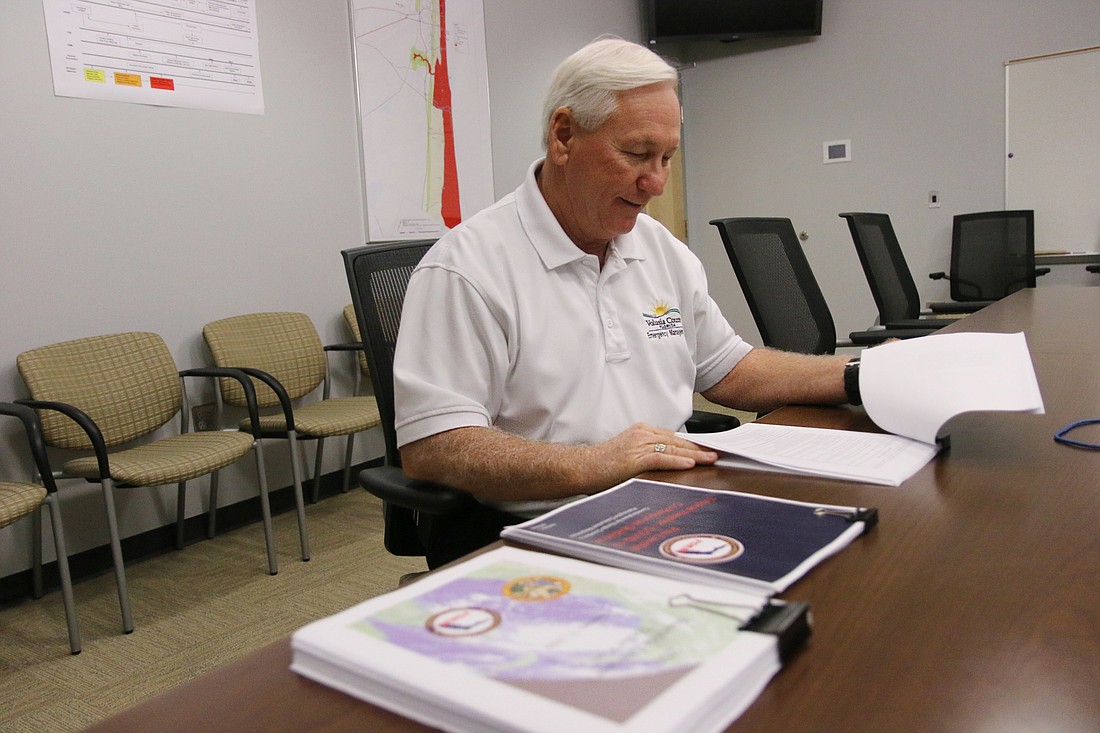- January 31, 2025
-
-
Loading

Loading

As we enter into what forecasters at the National Oceanic and Atmospheric Administration are predicting to be an above-normal hurricane season, on top of the ongoing COVID-19 pandemic, residents should plan for what to do if the area is impacted by a storm.
Volusia County is doing just that. Emergency management staff have different documents in place to guide the county's plan and are continuing to work with the school district and the hotel industry to further solidify them.
“If we had to kick it off tomorrow, we would be ready to go," said Jim Judge, Volusia County emergency management director.
Hurricane season began on June 1 and will run through Nov. 30. According to a press release, NOAA is predicting 13-19 named storms with winds of 39 mph or higher. Of those, six to 10 could become hurricanes with winds of 74 mph or higher, and that includes three to six hurricanes that could be a category 3 or higher. An average hurricane season produces 12 named storms, six of which become hurricanes, including 3 major ones, the press release continues.
When you add a global pandemic on top of that, one of the biggest challenges becomes sheltering those in need, Judge said. Normally, people in a general population shelter during a storm are given 20 square feet per person. Due to COVID-19 and social distancing recommendations, the county is increasing that to 60 square feet per person in a shelter. That means Volusia will have to increase the number of available shelters, Judge said, and the county is currently working with the school district, Daytona State College and local hotels to do so.
Judge said people should keep in mind that shelters are for people who have nowhere else to go.
“We always say the shelters are the lifeboat, not the love boat," he said.
If residents' homes are in a safe location, he recommends they crafts plans to shelter in place, including getting plywood to board up their homes and stocking up on needed supplies before a storm is announced.
“Don’t wait, because it can happen to us," Judge said. "It has happened to us.”
The county is currently under the 14th extension of its local state of emergency, and Judge predicts it could be extended through the end of the year if there is still a public health crisis. That the county is under this state of emergency before a storm has even been announced is a first, Judge said.
The county emergency operations center is still activated, as it has been since March, but it's mainly virtual. Judge said the county is working on a plan for the EOC regarding essential personnel should a storm impact he area. Sleeping arrangements will be tough with social distancing, and the county is considering limiting the number of people who would typically be inside the EOC during a storm.
Volusia has been fortunate in the last couple of years regarding storms, Judge said. Hurricane Dorian, who caused catastrophic damages in the Bahamas stayed off shore. Hurricane Irma shifted its path so that the strong right front quadrant mainly impacted the west coast. Hurricane Matthew, despite the damages it caused, also stayed offshore.
“You just never know what they’re going to do and you just have to pay close attention to the news to be able to be ready," Judge said.